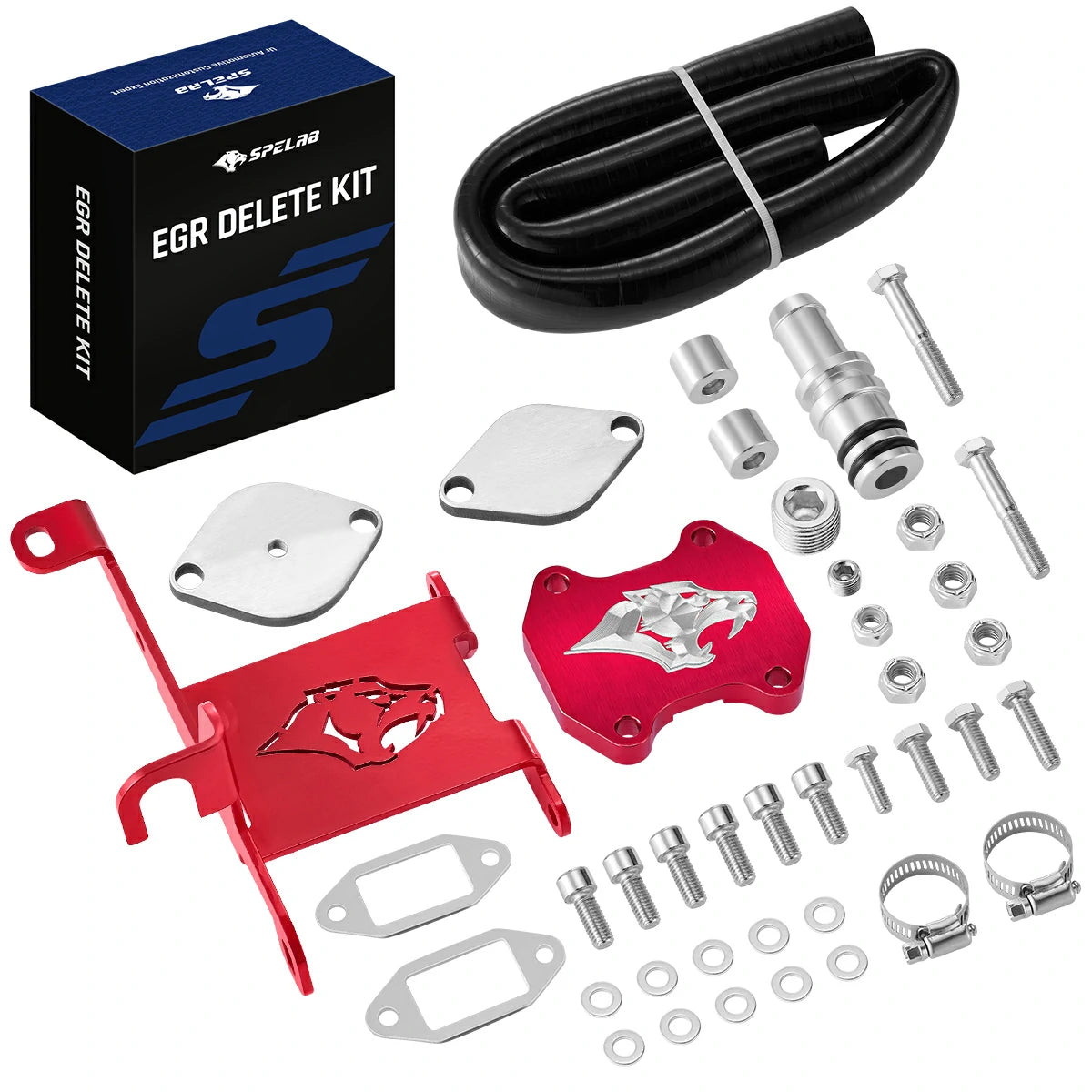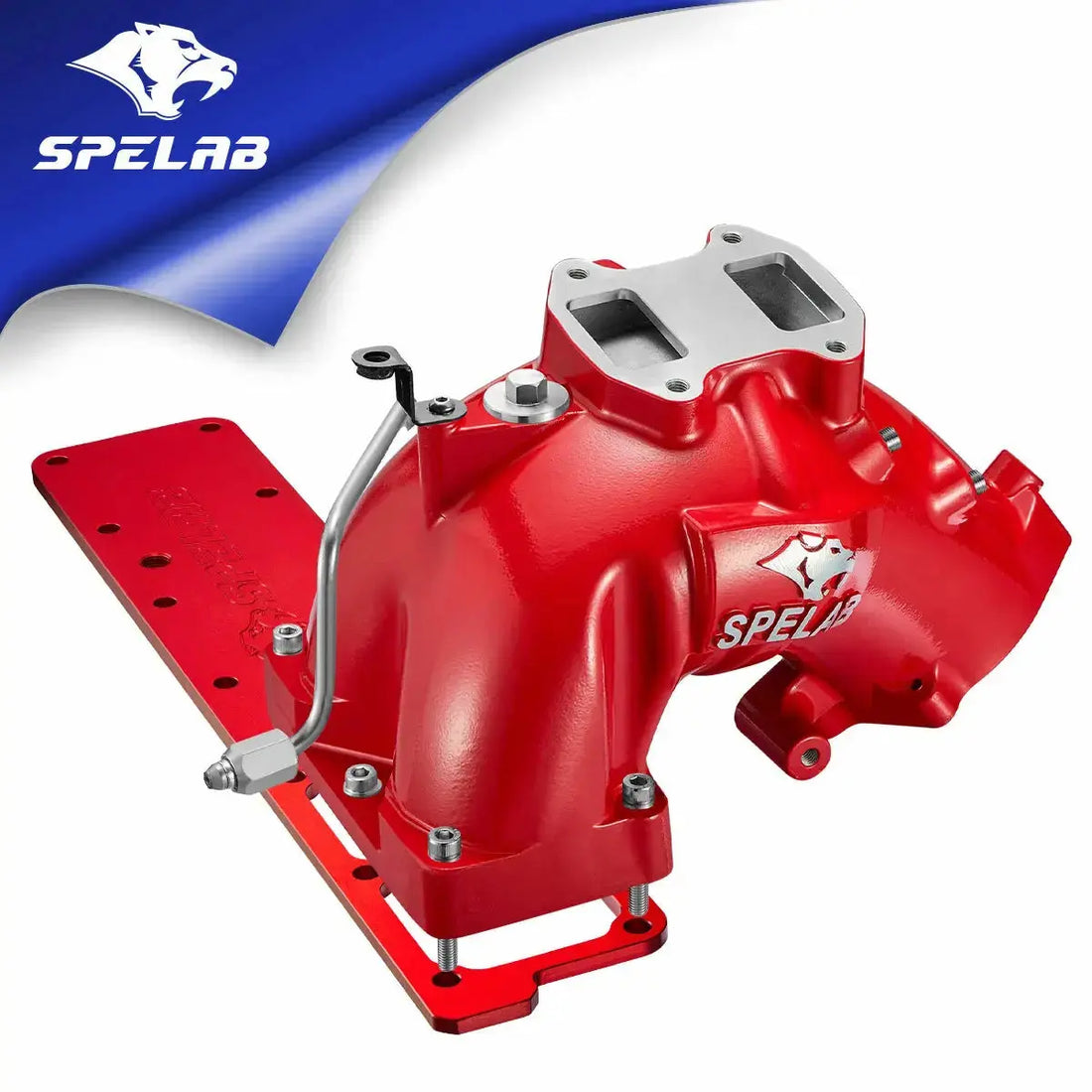For many owners of 2007-2024 6.7L Cummins engines, the question of whether to delete the EGR system when upgrading the intake horn is a common concern.
The intake horn is designed to optimize airflow, improving engine combustion efficiency, while the EGR system reduces emissions by lowering nitrogen oxides (NOx) production.
The interaction between these two components makes this modification a critical decision. In this article, we will explore this topic in depth, analyze the advantages and disadvantages, and reference real-world experiences from forum users to provide a clear guide for Cummins owners considering this upgrade.
1. Why Upgrade the 2007-2024 6.7 Cummins Intake Horn?
The factory intake horn has severe airflow restrictions, but an even bigger issue is the grid heater bolt failure that many owners have experienced. If these bolts loosen and fall into the engine, they can cause catastrophic damage to pistons, valves, and even the turbocharger.
Many users on Cummins forums have shared stories of engine failures caused by this issue, leading many to install grid heater delete kits as a permanent solution.
However, deleting the heater may cause cold start issues in winter, especially in freezing temperatures.
To improve intake efficiency while retaining a reliable heating function, many owners prefer the SPELAB 6.7 Cummins intake horn, which not only enhances airflow but also supports safer heating alternatives, ensuring smooth engine startups in cold weather.
Beyond fixing the grid heater issue, upgrading the intake horn also offers additional benefits:
- Reduces intake restrictions, improving throttle response.
- Optimizes airflow, increasing combustion efficiency and power output.
A forum user shared their experience:
"When I had it in the shop for the blown head gasket, they did the grid heater delete, and the shop also added the 6.7 Cummins air horn. There was a noticeable improvement in throttle response."

2. Should You Delete the EGR When Installing the SPELAB 6.7 Cummins Intake Horn?
When upgrading to the SPELAB 6.7 Cummins air intake horn, many truck owners question whether they should also delete the EGR system. Some owners prefer to remove it completely. As one forum user noted:
"If you're talking about something like the Banks Monster Ram intake, you have to do the EGR delete if you want it, or you will have exhaust coming out all over the engine bay once you remove the cross tube."
However, removing the EGR system is not mandatory when upgrading the air intake horn. From a compatibility perspective, the SPELAB intake horn functions perfectly with or without an EGR delete.
But from a performance, airflow, and carbon buildup standpoint, keeping or deleting the EGR system makes a significant difference.

3. Pros and Cons of Delete the EGR with a 6.7 Cummins Intake Horn Upgrade
Pros:
- Maximized Airflow Efficiency – When the EGR system is deleted, the exhaust gas recirculation path is physically blocked. This means that all air entering the intake manifold comes directly from the turbocharger or air filter, eliminating exhaust contamination. As a result, the air entering the combustion chamber has a higher oxygen content, leading to better combustion, improved fuel efficiency, and increased power output.
- Reduced Carbon Buildup – Exhaust gases contain oil vapors and soot particles, which settle in the intake manifold and EGR cooler, forming a thick sludge over time. This buildup narrows the intake passage, restricts airflow, and reduces engine efficiency. By eliminating exhaust gas recirculation, the intake system remains cleaner for longer, extending the lifespan of key components.
- Lower Intake Temperatures – Exhaust gases are hot, even after passing through the EGR cooler. When these gases mix with fresh intake air, intake temperatures rise, leading to higher combustion chamber temperatures. This can cause power loss or even trigger engine protection modes. With an EGR delete, the intake system receives only fresh, cooler air, helping the engine maintain optimal operating temperatures.
Cons:
- Legal Compliance Issues – In certain states, removing the EGR system can make a vehicle non-compliant with emissions regulations, potentially leading to inspection failures or fines. Truck owners should check local laws before proceeding with an EGR delete.
- Increased Installation and Tuning Complexity – After an EGR delete, the ECU will likely detect a missing system and trigger limp mode (reduced power). To prevent this, an ECU tune is usually required, which adds cost and complexity to the upgrade.
- Cold Start Performance – The EGR system helps preheat the combustion chamber in some conditions. Deleting it could result in slower warm-up times, especially in cold weather, making winter driving slightly more difficult.
- Exhaust Gas Temperature (EGT) Management – While an EGR delete usually lowers intake temperatures, it can also increase combustion temperatures under heavy loads, raising EGT levels. If EGTs get too high, it can damage the turbocharger and exhaust system. Many owners install a water/methanol injection system or upgrade to a larger intercooler to keep temperatures in check.

Fits 2010-2024 Ram 2500 and 3500 equipped with the 6.7L Cummins engine
$399.99
Buy Now4. Pros and Cons of Keeping the EGR with a 6.7 Cummins Intake Horn Upgrade
Pros:
- Simpler Installation – Keeping the EGR means you only need to install the intake horn, avoiding additional modifications like EGR delete kits, ECU tuning, or reprogramming.
- Legal Compliance – Retaining the EGR system helps avoid emissions-related fines and ensures the vehicle passes inspections in regulated areas.
- Better for Daily Driving – If you're using your truck for commuting or light-duty applications, keeping the EGR system maintains factory emissions control while still allowing improved airflow from the upgraded intake horn.
Cons:
- Limited Airflow Gains – With the EGR still functioning, some exhaust gases will continue recirculating into the intake, lowering the oxygen concentration and partially restricting airflow.
- Potential Carbon Build-Up – Over time, EGR operation leads to soot accumulation in the intake manifold, valves, and EGR cooler, which can decrease performance and increase maintenance costs.
5. SPELAB’s Recommendation: Which Option is Right for You?
If you want the most power and minimal carbon buildup
- Delete the EGR system when upgrading the SPELAB 6.7 Cummins intake horn. But make sure your local regulations allow it and prepare for ECU tuning.
If you are planning major performance upgrades (e.g., larger turbo, increased horsepower)
- Deleting the EGR is recommended to maximize airflow and reduce intake restrictions.
If you mainly drive your truck daily and want to stay emissions compliant
- Install the SPELAB intake horn without deleting the EGR to improve intake flow while maintaining factory emissions control.

$667
Buy Now6. Conclusion
The decision to delete or keep the EGR system when upgrading the SPELAB 6.7 Cummins intake horn depends on legal considerations, driving needs, and long-term maintenance costs. By reviewing real-world experiences from truck owners and SPELAB’s professional recommendations, you can make the best choice for your specific application. What’s your take? Share your thoughts below!






